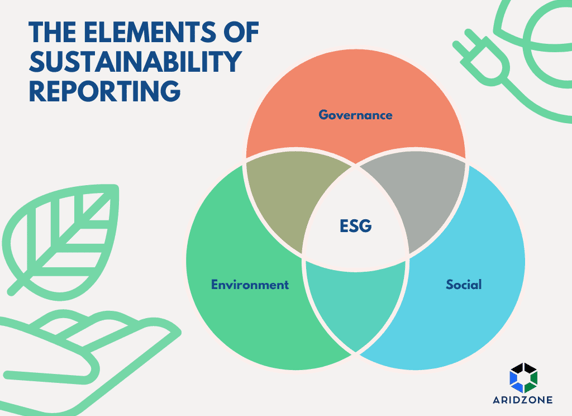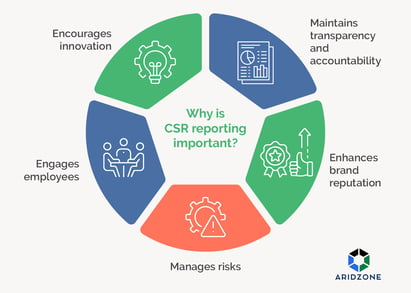The Ultimate Guide to Sustainability Reporting for Businesses
Hanan Chaaibi
4/30/20256 min read


Sustainability is no longer just a buzzword. It’s something businesses have to take seriously. As global concerns over climate change, social equity, and ethical business practices continue to grow, companies are expected to be transparent about their sustainability efforts. This is where sustainability reporting comes in. But what exactly is sustainability reporting? Why is it so important? And how do you create one for your business?
In this guide, we’ll break down everything you need to know about sustainability reporting for businesses. We’ll explain the concept, guide you on how to write a report, and show you why it matters to your company’s future.
Let’s get started!
What is Sustainability Reporting?
Sustainability reporting is the practice of tracking and sharing a business’s impact on the environment, society, and economy. It’s a way for companies to be open about how they’re managing their resources, reducing waste, and supporting social responsibility. These reports provide transparency to stakeholders, such as customers, investors, and employees, about the company's sustainable practices.
Sustainability reporting goes beyond just profits. It covers three main areas:
Environmental Impact: How a company is working to minimize its carbon footprint, reduce waste, and use resources efficiently.
Social Impact: How a company supports its employees, engages with communities, and ensures ethical practices across the business.
Economic Impact: How sustainable practices contribute to the company’s long-term profitability, including the financial benefits of sustainable products or services.
For businesses, sustainability reporting isn’t just a form of public relations; it’s a critical step toward building a responsible, transparent, and profitable company. Many organizations choose to partner with a sustainability reporting consultant to streamline this process and ensure alignment with inernational standards.
How to Write a Sustainability Report
Creating a sustainability report may seem overwhelming, but it’s a structured process that gets easier with practice. Here’s a simple step-by-step guide to help you write a sustainability report:
1. Define Your Purpose and Goals
Before you start, you need to understand the purpose of your report. Are you focusing on your environmental efforts? Or perhaps the social initiatives your business supports? Setting clear goals will guide the entire reporting process.
Be Transparent: Always share honest and clear information about your company’s sustainability efforts. Don’t hide challenges—your readers appreciate honesty.
Track Progress: Show what you’re doing well and where you still need work. It helps build trust and shows you’re serious about improvement.
Involve Stakeholders: Keep your customers, employees, investors, and community in the loop. Let them be part of your sustainability journey.
Manage Risks: Use your report to spot risks early. That way, you can plan and fix issues before they grow.
Follow the Rules: Stick to both local and global sustainability standards. It adds credibility and keeps your reporting consistent.
Create Long-Term Value: Show how your sustainability efforts lead to long-term success. It's not just about today—it’s about building a better future for your business and the planet.
2. Collect Data
Once you’ve defined your objectives, gather data across three main categories: environmental, social, and economic. This data might include:
Environmental: Energy consumption, waste reduction, emissions.
Social: Employee diversity, workplace safety, community engagement.
Economic: Revenue from sustainable products, cost savings from energy-efficient practices.
The more accurate and detailed your data, the stronger your report will be.
3. Use a Reporting Framework
Using a recognized framework for your sustainability report adds credibility and structure. Some well-known frameworks include:
Global Reporting Initiative (GRI): Covers a wide range of sustainability topics.
Sustainability Accounting Standards Board (SASB): Focuses on financially material sustainability issues.
Task Force on Climate-related Financial Disclosures (TCFD): Aims to provide guidance on how businesses can report climate-related risks and opportunities.
If you’re reporting in the UAE, also follow local frameworks such as the ADX ESG Disclosure Guidelines and the DFM ESG Reporting Guide. These align your report with national expectations and help meet regulatory requirements. These frameworks ensure your report aligns with global and local standards, increasing transparency and impact.
4. Write Your Story
A good sustainability report is more than just data. It should tell a story. Highlight your successes, but also mention challenges and areas where you plan to improve. This transparency shows your commitment to continual growth.
5. Make It Easy to Read
Nobody wants to read a 50-page document filled with complex jargon. Keep your report visually appealing and easy to navigate. Use charts, graphs, and infographics to help explain your data and make the report more engaging. A well-designed report will keep your audience interested and help them absorb the information.
6. Set Goals for the Future
At the end of your report, make sure to outline future sustainability goals. This shows that your company is not only focused on its current achievements but also dedicated to improving in the future.
Why Sustainability Reporting is Important
Sustainability reporting isn’t just a nice-to-have—it’s essential for several reasons. Here’s why it matters to your business:
1. Builds Trust with Stakeholders
Transparency is key to building trust with customers, investors, and other stakeholders. By publishing a sustainability report, you show that your business is taking responsibility for its environmental and social impact. This openness fosters credibility and trust.
2. Attracts Investors
In today’s market, many investors are looking for companies with strong sustainability credentials. A well-done sustainability report demonstrates that your company is financially responsible and committed to long-term growth, making it more attractive to investors.
3. Improves Decision-Making
Sustainability reports aren’t just for public relations; they are useful tools for internal decision-making. By analyzing your sustainability data, you can identify inefficiencies, cut costs, and make smarter business decisions that benefit both the planet and your profits.
4. Boosts Your Brand Reputation
A company that values sustainability builds a reputation as a responsible and ethical business. This can help you attract more customers who want to support brands with values they align with. Over time, a strong sustainability report can elevate your company’s brand and market position.
5. Meets Regulatory Requirements
In some regions, businesses are legally required to report their sustainability practices. By adopting sustainability reporting early on, you ensure that your company stays ahead of regulations and avoids potential fines or penalties.
6. Encourages Collaboration
Sustainability reporting can foster collaboration with suppliers, customers, and other businesses. Sharing your goals and progress helps establish partnerships that support mutual sustainability initiatives and lead to greater impact.
What is Corporate Sustainability Reporting?
While general sustainability reporting is important for all businesses, corporate sustainability reporting is particularly significant for larger companies. It typically involves more complex data and is often more strategic in nature. Here’s what corporate sustainability reporting looks like:
1. Comprehensive and Strategic
Corporate sustainability reporting covers the entire scope of a company’s operations and provides a more detailed look at the company’s long-term sustainability goals. It aligns with corporate strategy, helping businesses identify risks and opportunities related to sustainability.
2. Global Standards and Guidelines
Corporate sustainability reports often follow global standards to ensure consistency and comparability. These guidelines help businesses present their sustainability data in a way that investors and stakeholders can easily understand and compare with other companies.
3. Focus on Financial and Non-Financial Data
Corporate sustainability reporting doesn’t just look at environmental and social performance—it also links these elements to the company’s financial performance. By showing how sustainability affects profits, businesses can make a stronger case for investing in sustainability practices.
4. Transparency and Accountability
Large companies must be transparent about their sustainability efforts. Corporate sustainability reporting helps businesses be accountable to their stakeholders by providing clear insights into how they’re addressing key sustainability issues, such as carbon emissions, waste management, and labor practices.
Ready to take your sustainability efforts to the next level? At Arid Zone Sustainability, we specialize in helping businesses like yours master sustainability reporting. Whether you’re just getting started or looking to refine your approach, our expert team is here to guide you every step of the way.
Contact us today to learn more about how to write a sustainability report that not only meets global standards but also drives long-term success for your business. Let’s make sustainability work for you!




